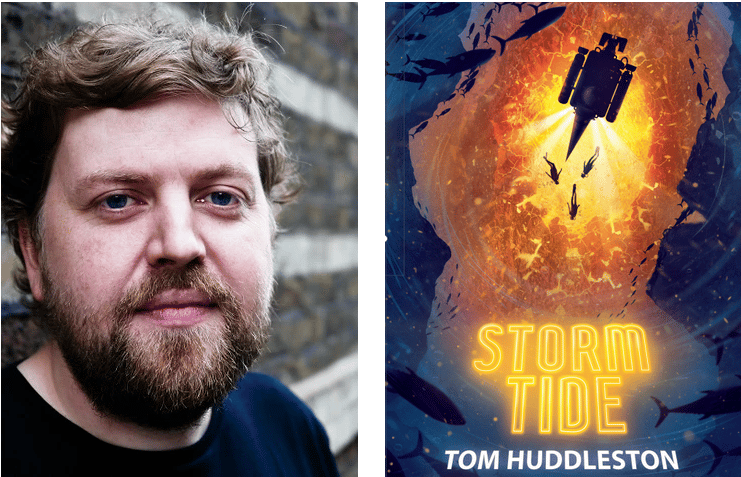We are delighted to welcome author Tom Huddleston to our blog today. Tom’s new book StormTide (available here) is published this month and is the third instalment in the FloodWorld trilogy.
The stories in the trilogy are set in a futuristic world that has become ravaged by the effects of climate change. Countries no longer have their current borders and people are grouped according to their living conditions. From a sunken dystopian London to the dry deserts of North America, the cinematic settings of the stories bring the potential effects of climate change to the front of our minds in a very vivid way.
Author Tom Huddleston stopped by our blog this week to tell us more about the sunken cities that inspired the settings in the FloodWorld trilogy…
Guest Post – Rising Tides: How real and fictional sunken cities inspired the FloodWorld trilogy
by Tom Huddleston, author of StormTide (available here)
‘No rays from the holy Heaven come down On the long night-time of that town; But light from out the lurid sea Streams up the turrets silently…’
From Edgar Allen Poe’s poem The City in the Sea, these lines capture perfectly the haunting, romantic allure of the flooded city, of civilisation swallowed by the tide. It’s the same feeling I’ve attempted to evoke in my recently completed Floodworld trilogy of adventure stories for young readers.
With the final book, StormTide, now available, I wanted to take a look at some of the most compelling images of rising tides and flooded towns in fiction and in reality, and think about how they inspired the writing of my trilogy.
Set several hundred years in the future after climate change has altered the face of the planet, the first book Floodworld opens in the outskirts of London, where street kids Kara and Joe eke out a living in a giant floating slum made from the upper stories of tower blocks and the rafts and walkways linking them together.
The image of the flooded but still occupied city was my starting point for Floodworld; it just felt so evocative and exciting, a great location for adventure. My inspiration came from multiple sources – from the city of Venice, where my aunt lives and where I’ve spent quite a few happy holidays; from the so-called ‘Venice of Africa’, Makoko in Nigeria, a vast and ramshackle village built out into the Lagos Lagoon, where I’ve never been but have only read about.
But the biggest fictional inspiration was JG Ballard’s novel The Drowned World, in which the warming of the planet has transformed the city of London into a verdant tropical lagoon, a flooded jungle inhabited by strange and isolated people. The tone couldn’t be more different from Floodworld, but the idea of a familiar place utterly changed was very exciting.
But the FloodWorld books aren’t downbeat dystopias. In the second book, DustRoad, our heroes travel across the Atlantic ocean to the desert continent of North America, where after many adventures they arrive in the city of Frisco. Inhabited by a tribe called the Mariners who attempt to live in harmony with the rising tides, San Francisco has become a city built both in and out of the water, with half-sunken blocks and office buildings, an underwater tram system and amphibious vehicles on the roads.
It’s not dissimilar to the utopian vision offered by Kim Stanley Robinson in his wonderful New York 2140, a book I read after writing DustRoad, but that explores a lot of the same territory (albeit in much greater, more scientific detail!). Robinson’s book attempts to offer a hopeful view of the future, where humanity has faced the challenge of climate change and adapted to it. His New York is every bit as exciting and busy as the city we know today – it’s just that some of it happens to be underwater.
I have a feeling we’ll need optimistic visions like those found in DustRoad and New York 2140 more and more over the coming years, as climate change intensifies and the world’s low-lying cities come under threat. With the FloodWorld trilogy, and particularly in the final book, StormTide, I’ve attempted to offer my young readers some hope for the future; the idea that even as the world changes, there’ll still be a place for friendship and optimism and activism, the chance for them to change their world for the better.
——————–
Tom’s new book, StormTide, is available to purchase here.
—————–
Many thanks to Tom for visiting our blog and sharing the inspiration for the setting of his trilogy. For more about the book, check out the other stops on the blog tour, too.
—————————–
Where next? > Visit our Reading for Pleasure Hub
> Browse our Topic Booklists
> View our printable year group booklists.
> See our Books of the Month.









